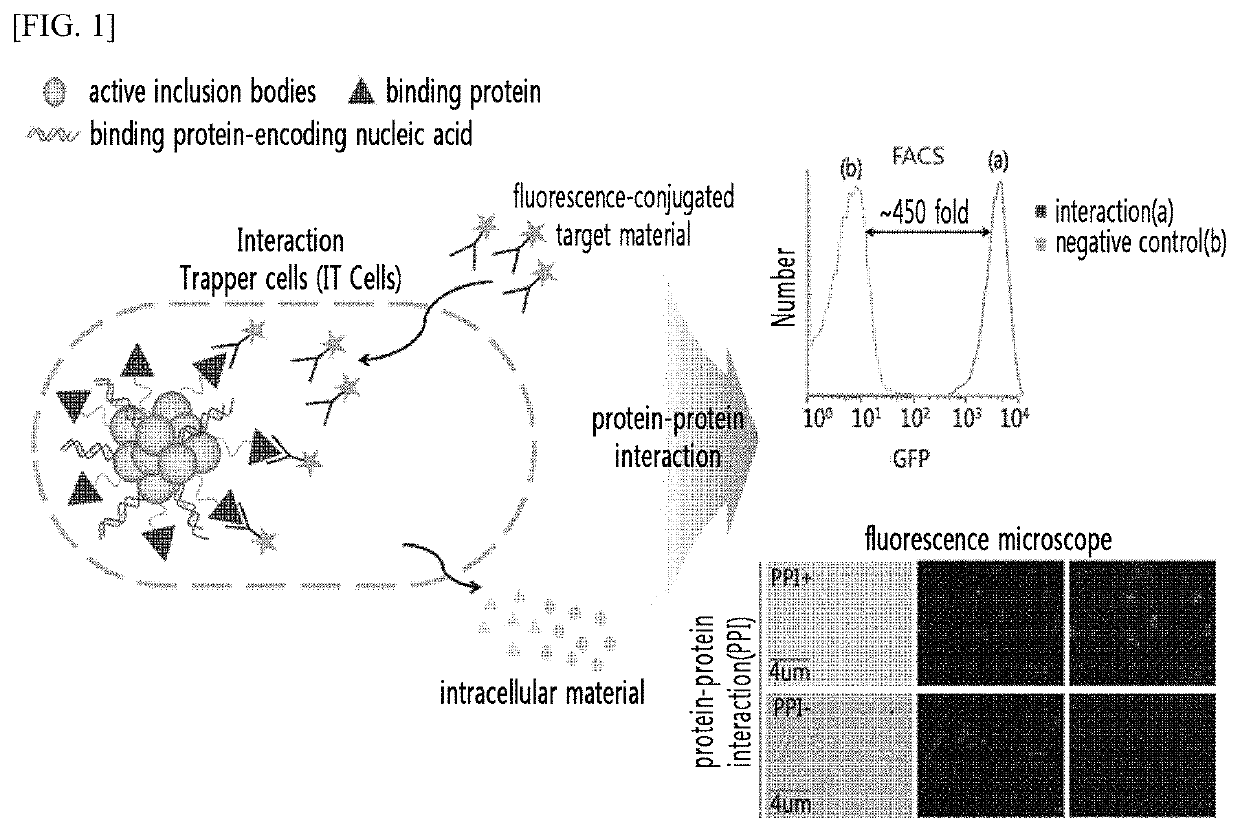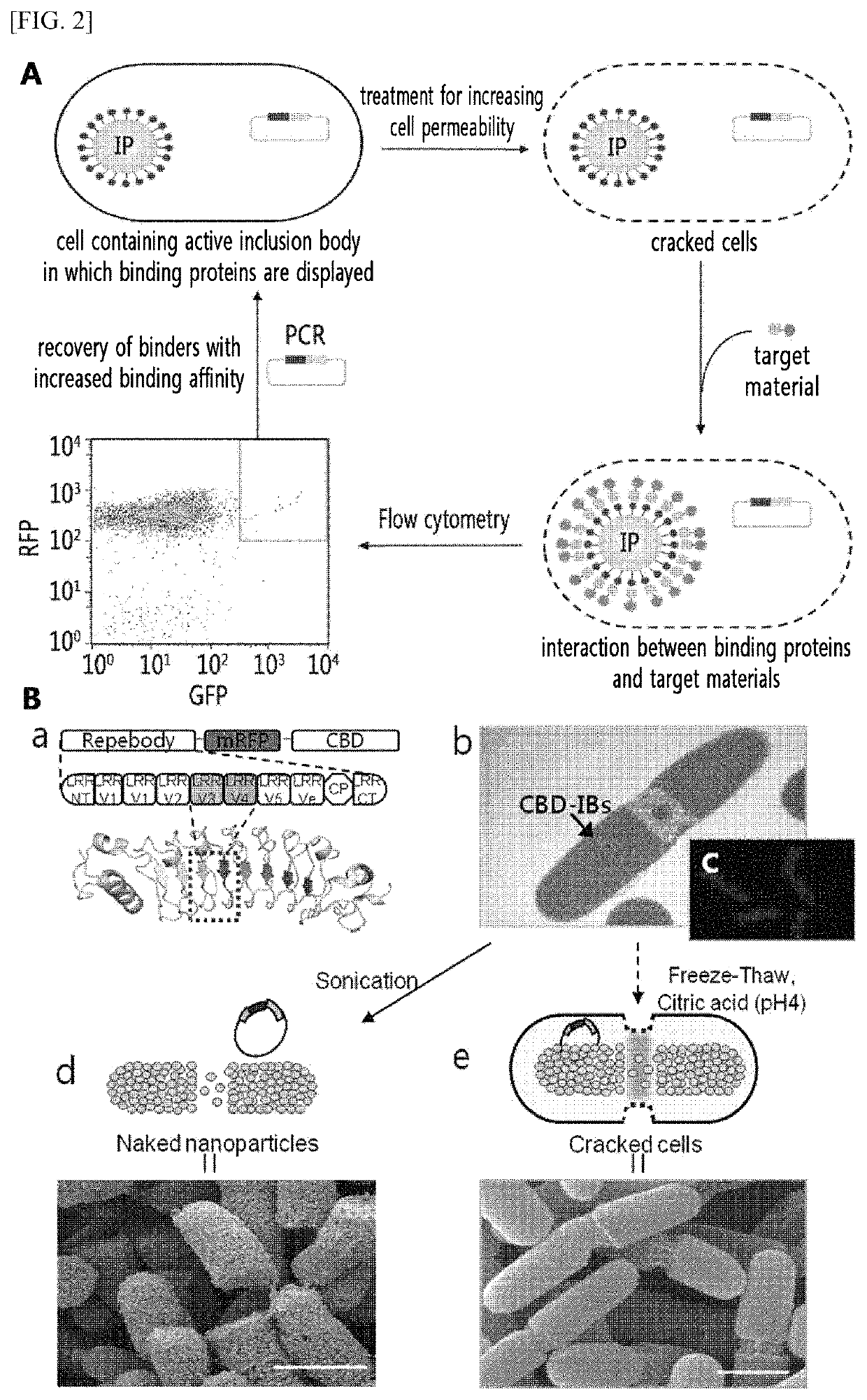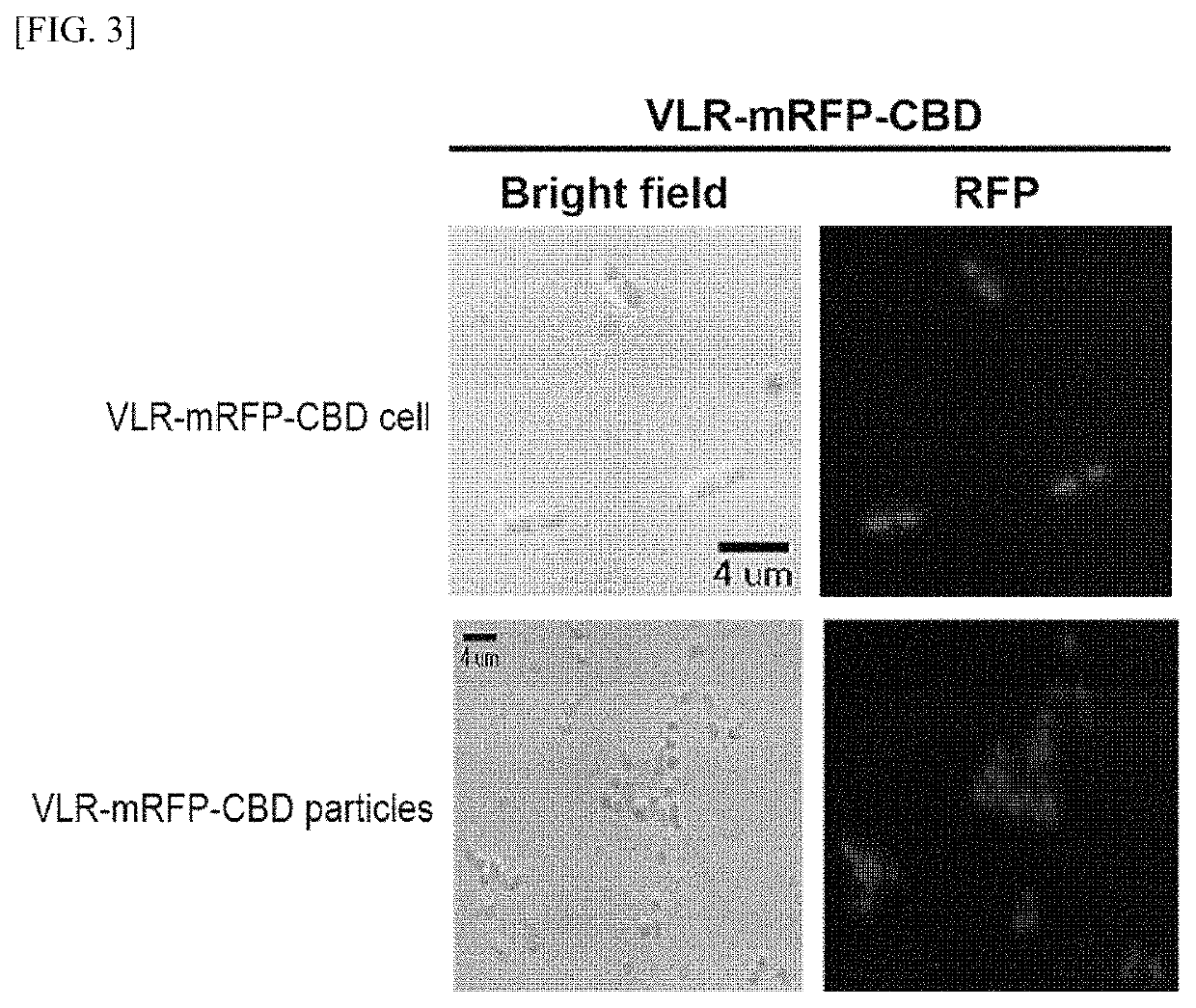Analysis method of molecular interactions on protein nanoparticles using flow cytometry
a technology of molecular interactions and flow cytometry, which is applied in the field of molecular interactions on protein nanoparticles using flow cytometry, can solve the problems of emulsion destruction, limited protein size to be displayed on the mrna-ribosome, and limited stability of ribosome complexes and technical sensitivity, so as to improve the screening efficiency and improve the signal-to-noise ratio , the effect of easy analysis
- Summary
- Abstract
- Description
- Claims
- Application Information
AI Technical Summary
Benefits of technology
Problems solved by technology
Method used
Image
Examples
example 1
nt of Genes and Enzymes
[0147]A cellulose-binding domain (CBD, SEQ ID NO: 15) gene of family II was cloned using the exoglucanase gene of Cellulomonas fimi KCTC 9143 strain obtained from the Korean Collection of Type Cultures (KCTC). The improved modified green fluorescent protein (mGFP, SEQ ID NO: 16) gene was obtained from the pEGFP (Clontech, CA, USA), a commercial vector, and the plasmid vector pRFP including the mRFP1 (monomeric red fluorescent protein 1, SEQ ID NO: 17) gene was provided by the Korea Advanced Institute of Science and Technology (KAIST) (Daejeon, Korea). Among the repebody (InB-VLR) family (artificial antibody protein), which is an artificial protein where the N-terminus of internaline B (InB) protein, a modified repeat module of a variable lymphocyte receptor (VLR) protein, and the C-terminus of VLR protein are conjugated, In-VLR5c (Korean Patent Application Publication No. 10-2010-0086055, SEQ ID NO: 18), which has no binding affinity for IL6; and In-VLR5c-D3E8...
example 2
ion of a Recombinant Vector
[0148]All of the primers used in the present invention were synthesized by Bioneer Corporation (Daejeon, Korea). The primers are shown in Table 1 below. The restriction sites such as NdeI and KpnI are indicated in bold in Table 1. All genes used in the present invention were amplified using each of the primers shown in Table 1, conjugated by overlap extension PCR, inserted into the NdeI and HindIII restriction sites of pET21a vector, and recombined using E. coli DH5a cells. The thus-prepared plasmid vectors were designated as pInVLR5c-mRFP-CBD, pD3E8-mRFP-CBD, pF11-mRFP-CBD, pGFP-IL6, respectively. Additionally, the pInVLR5c-mRFP-CBD plasmid, after treating with the restriction enzymes of NdeI and HindIII, was inserted into the pET21a vector, which was treated with NdeI and HindIII, and recombined using E. coli DH5a cells. The thus-prepared plasmid vector was designated as pInVLR5c-mRFP.
[0149]
TABLE 1Primer NameSequence (5′→3′)SEQ ID NOndeI histag VLR FGGAA...
example 3
solation
[0151]The pInVLR5c-mRFP-CBD, pD3E8-mRFP-CBD, pF11-mRFP-CBD, and pInVLR5c-mRFP plasmids prepared in Example 2 were transformed into E. coli DH5a, inoculated into LB medium (1% bacto-trypton, 0.5% yeast extract, and 1% NaCl) containing ampicillin (50 μg / mL), and incubated in a shaking incubator at 37° C. for 24 hours. The cultured cell suspension was centrifuged at 4,470×g for 5 minutes using a centrifuge (Universal 320R, Hettich), and the plasmids were isolated from the pellet freed from the supernatant using the QIAprep® spin miniprep kit, and the isolated plasmids were confirmed on a 1% agarose gel by electrophoresis.
[0152]Additionally, the pGFP-IL6 plasmid prepared in Example 2 was transformed into E. coli DH5a, inoculated into LB medium (1% bacto-trypton, 0.5% yeast extract, and 1% NaCl) containing ampicillin (50 μg / mL), and incubated in a shaking incubator at 37° C. for 24 hours. The cultured cell suspension was centrifuged at 4,470×g for 5 minutes using a centrifuge (Un...
PUM
| Property | Measurement | Unit |
|---|---|---|
| temperature | aaaaa | aaaaa |
| pH | aaaaa | aaaaa |
| volume | aaaaa | aaaaa |
Abstract
Description
Claims
Application Information
 Login to View More
Login to View More - R&D
- Intellectual Property
- Life Sciences
- Materials
- Tech Scout
- Unparalleled Data Quality
- Higher Quality Content
- 60% Fewer Hallucinations
Browse by: Latest US Patents, China's latest patents, Technical Efficacy Thesaurus, Application Domain, Technology Topic, Popular Technical Reports.
© 2025 PatSnap. All rights reserved.Legal|Privacy policy|Modern Slavery Act Transparency Statement|Sitemap|About US| Contact US: help@patsnap.com



